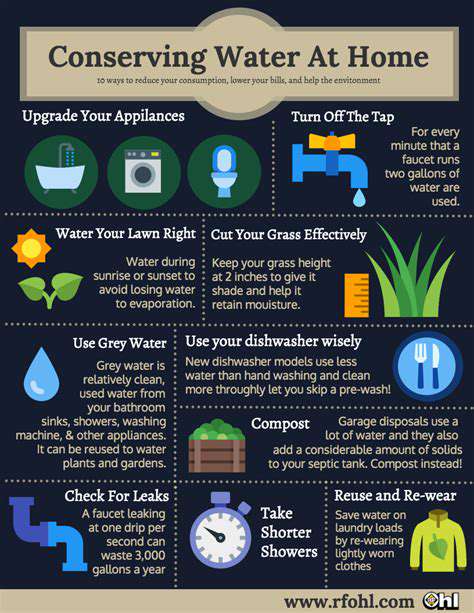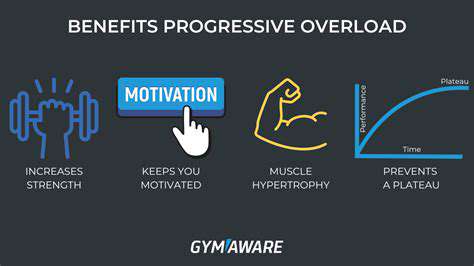Best Habits for Environmental Health

Conserving Water: Practical Tips
Conserving water is crucial for maintaining healthy ecosystems and ensuring a sustainable future. We use water for everything from drinking and cooking to washing and sanitation. By implementing simple changes in our daily routines, we can significantly reduce our water consumption and contribute to water conservation efforts. This involves being mindful of our water usage and making conscious choices to minimize waste.
Implementing low-flow showerheads and faucets can dramatically decrease the amount of water used during daily routines, like showering and washing dishes. Furthermore, repairing leaks promptly is essential, as even small leaks can waste gallons of water over time. Considering rainwater harvesting systems for gardens and landscaping can also significantly reduce reliance on municipal water supplies.
Energy Conservation: Simple Steps
Saving energy is not only environmentally beneficial, but it can also lead to significant cost savings on utility bills. By adopting simple energy-saving practices, we can reduce our carbon footprint and contribute to a cleaner, healthier planet. Switching to energy-efficient appliances, such as refrigerators and washing machines, is a great starting point for reducing energy consumption.
Unplug electronics when not in use to prevent phantom loads, which consume energy even when the device is switched off. This seemingly small action can make a difference in long-term energy savings. Also, consider using natural light whenever possible to reduce reliance on artificial lighting. These simple steps can make a substantial difference.
Sustainable Practices in Daily Life
Integrating sustainable practices into our daily lives is essential for creating a more eco-friendly future. This encompasses a wide range of actions, from reducing our consumption to supporting businesses committed to sustainability. Making conscious decisions about the products we buy and the services we use can have a significant impact.
Buying products with minimal packaging and supporting businesses that prioritize environmental responsibility are important steps. Composting food scraps and yard waste can significantly reduce landfill waste and create nutrient-rich soil for gardens. These conscious choices contribute to a healthier environment.
Water and Energy Conservation in the Home
Efficient water and energy use begins at home. Implementing water-saving fixtures, such as low-flow showerheads and faucets, can significantly reduce water consumption. This simple change can have a huge impact on our water bills. Regularly checking for leaks and promptly repairing them are also crucial steps.
Utilizing energy-efficient appliances and properly insulating the home are important steps in energy conservation. Turning off lights and electronics when not in use, and using natural light whenever possible, are other simple strategies. These measures can dramatically reduce our environmental impact and lower our utility bills.
Water and Energy Efficiency in the Community
Community-wide initiatives play a crucial role in promoting water and energy conservation. Promoting awareness and education about sustainable practices within the community is essential for driving widespread change. Implementing water-efficient landscaping practices in public spaces can significantly reduce water usage.
Supporting local initiatives for renewable energy sources and promoting the use of public transportation are effective community-level strategies. These collective efforts can create a ripple effect, influencing individual actions and fostering a more sustainable future for everyone.
Deciding what kind of games you enjoy is crucial to finding the right ones for you. Do you prefer strategic thinking and complex mechanics, or do you crave fast-paced action and adrenaline-pumping thrills? Consider whether you enjoy playing solo, with friends, or in large online communities. Understanding your preferred playstyle will help you narrow down your options and avoid getting frustrated with games that don't match your interests. This self-reflection is a critical step in the process of finding games that provide a fulfilling and enjoyable experience.
Transportation Choices: Shifting Towards Sustainable Mobility
Embracing Public Transportation
Public transportation systems, encompassing buses, trains, and subways, offer a crucial pathway to reducing individual carbon footprints. Utilizing these systems not only decreases reliance on private vehicles but also significantly lessens congestion on roadways. By opting for collective transportation, we contribute to a cleaner environment and a more sustainable urban landscape. Furthermore, public transport often provides cost-effective travel options, making it an accessible choice for a wide range of individuals and families.
Investing in robust and efficient public transportation infrastructure is vital. This includes expanding routes, increasing frequency of service, and ensuring accessibility for all members of the community. Well-maintained and comfortable transit options encourage wider adoption, making sustainable mobility a more practical and appealing reality for everyone.
Cycling as a Sustainable Alternative
Cycling is a fantastic way to integrate active transportation into our daily routines. It's a remarkably eco-friendly option, producing zero emissions and promoting physical health. By choosing bicycles for shorter commutes or errands, we can significantly reduce our reliance on cars and contribute to cleaner air quality. Many urban areas are now developing dedicated cycling paths and lanes, making it safer and more convenient to cycle.
Encouraging cycling requires a multi-faceted approach. This includes creating safe and well-maintained cycling infrastructure, offering incentives for cycling commuters, and promoting cycling as a healthy and enjoyable activity. We can foster a culture of cycling to actively encourage a shift towards more sustainable mobility.
Walking: The Simple, Powerful Choice
Walking is perhaps the most accessible and environmentally friendly mode of transportation. It's a fantastic way to incorporate physical activity into our daily lives, reducing our reliance on cars and contributing to a healthier lifestyle while concurrently decreasing our carbon footprint. Walking to work, school, or local shops can positively impact our physical and mental well-being while promoting a sustainable community.
Encouraging walking requires a supportive urban environment. This means creating pedestrian-friendly streets, implementing well-lit and safe walkways, and ensuring easy access to destinations on foot. By making walking a viable and attractive option, we can promote sustainable mobility and a healthier lifestyle for all.
Electric Vehicles: A Step Towards Electrification
Electric vehicles (EVs) represent a significant advancement in sustainable transportation. While still facing challenges regarding charging infrastructure and battery production, EVs offer a promising alternative to traditional gasoline-powered vehicles. Their zero tailpipe emissions make them a key component in reducing air pollution and combating climate change.
Further development and advancement of EV technology, coupled with the expansion of charging stations, will be crucial to wider EV adoption. Government incentives and industry investments in EV infrastructure will play a vital role in accelerating the transition to a more sustainable transportation future. This will help create a more eco-friendly and efficient mobility network.
Sustainable Freight and Logistics
The transportation of goods also plays a vital role in our overall carbon footprint. Shifting towards sustainable freight solutions is critical. This includes using more fuel-efficient trucks, optimizing delivery routes to reduce mileage, and exploring alternative transportation methods like rail or water for long-distance cargo. Efficient logistics and delivery methods are key to minimizing the environmental impact of goods transport.
Investing in sustainable freight infrastructure and promoting practices that prioritize reduced emissions in the logistics sector will play a crucial role. This includes developing strategies for last-mile delivery, promoting intermodal transportation, and encouraging the adoption of electric or alternative fuel options for freight vehicles.
Read more about Best Habits for Environmental Health
Hot Recommendations
-
*Guide to Managing Gout Through Diet
-
*Best Habits for Financial Well being
-
*How to Build a Routine for Better Mental Health
-
*How to Eat Healthy on a Budget [Tips & Meal Ideas]
-
*Guide to Practicing Self Acceptance
-
*How to Incorporate More Movement Into Your Day
-
*Guide to Managing Chronic Pain Naturally
-
*Guide to Building a Reading Habit for Well being
-
*Top 5 Weight Loss Supplements That Actually Work
-
*Best Exercises for Postpartum Recovery [Beyond Abdominal Work]






![How to Read Nutrition Labels Correctly [Expert Tips]](/static/images/26/2025-06/MakingInformedChoices3ATakingControlofYourDiet.jpg)



